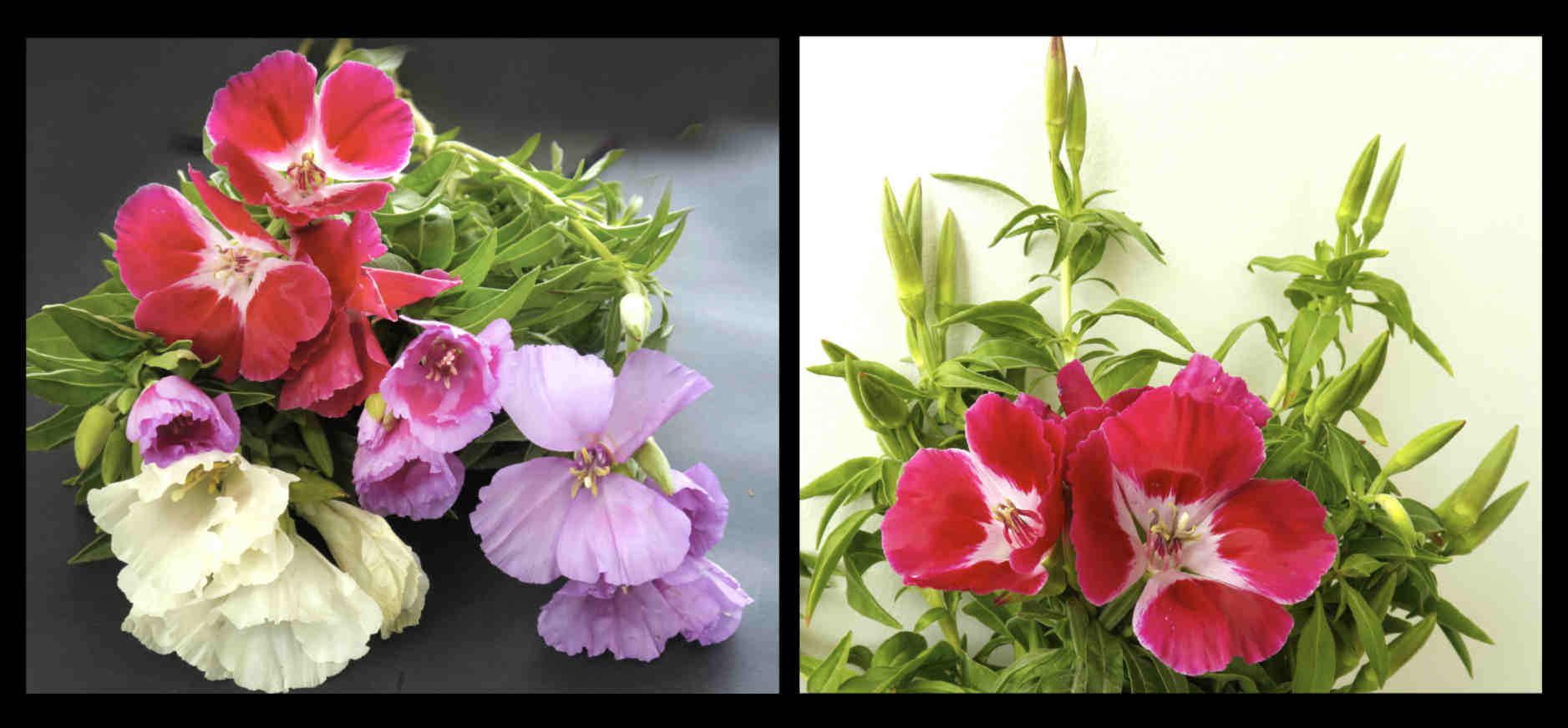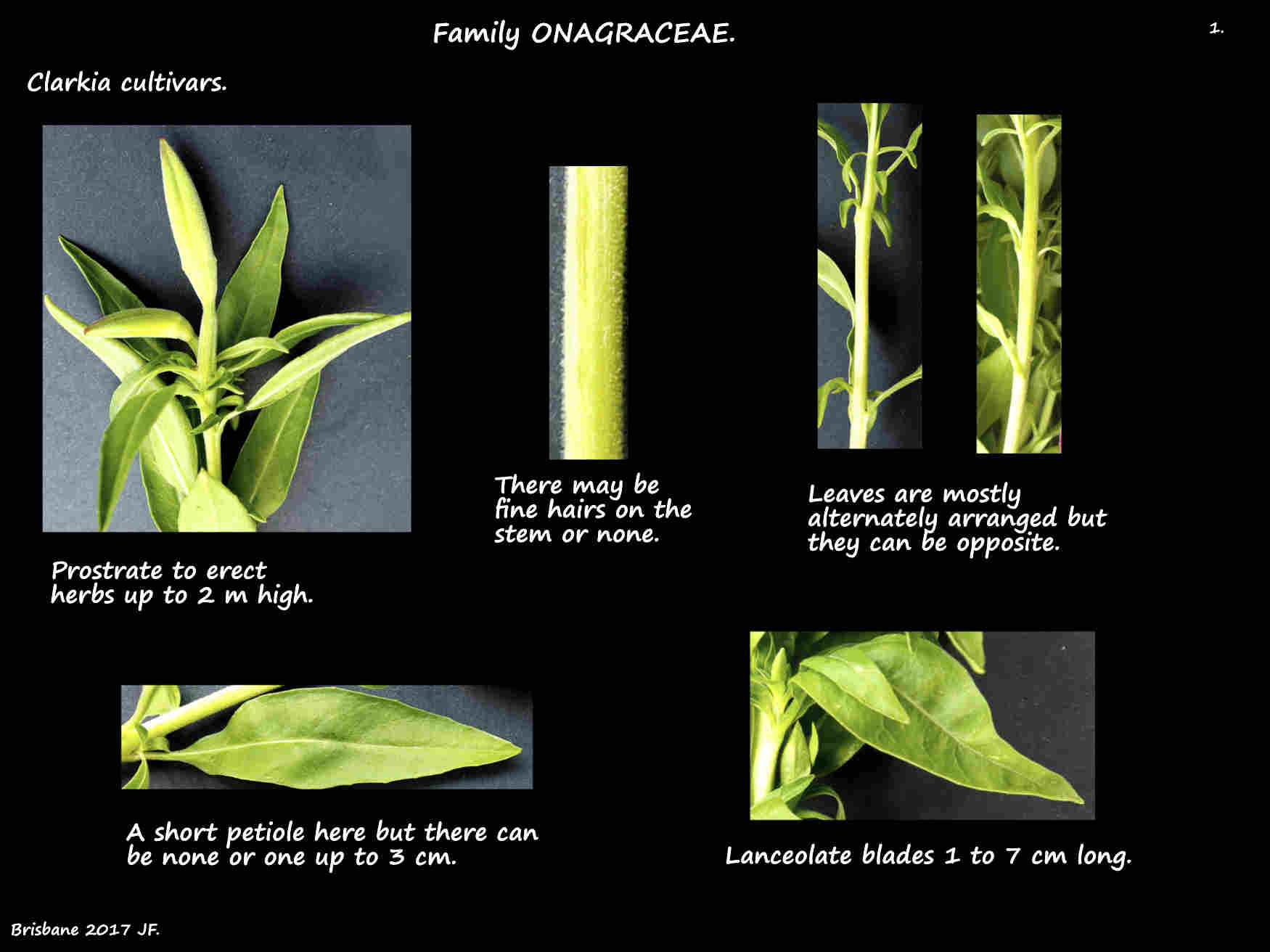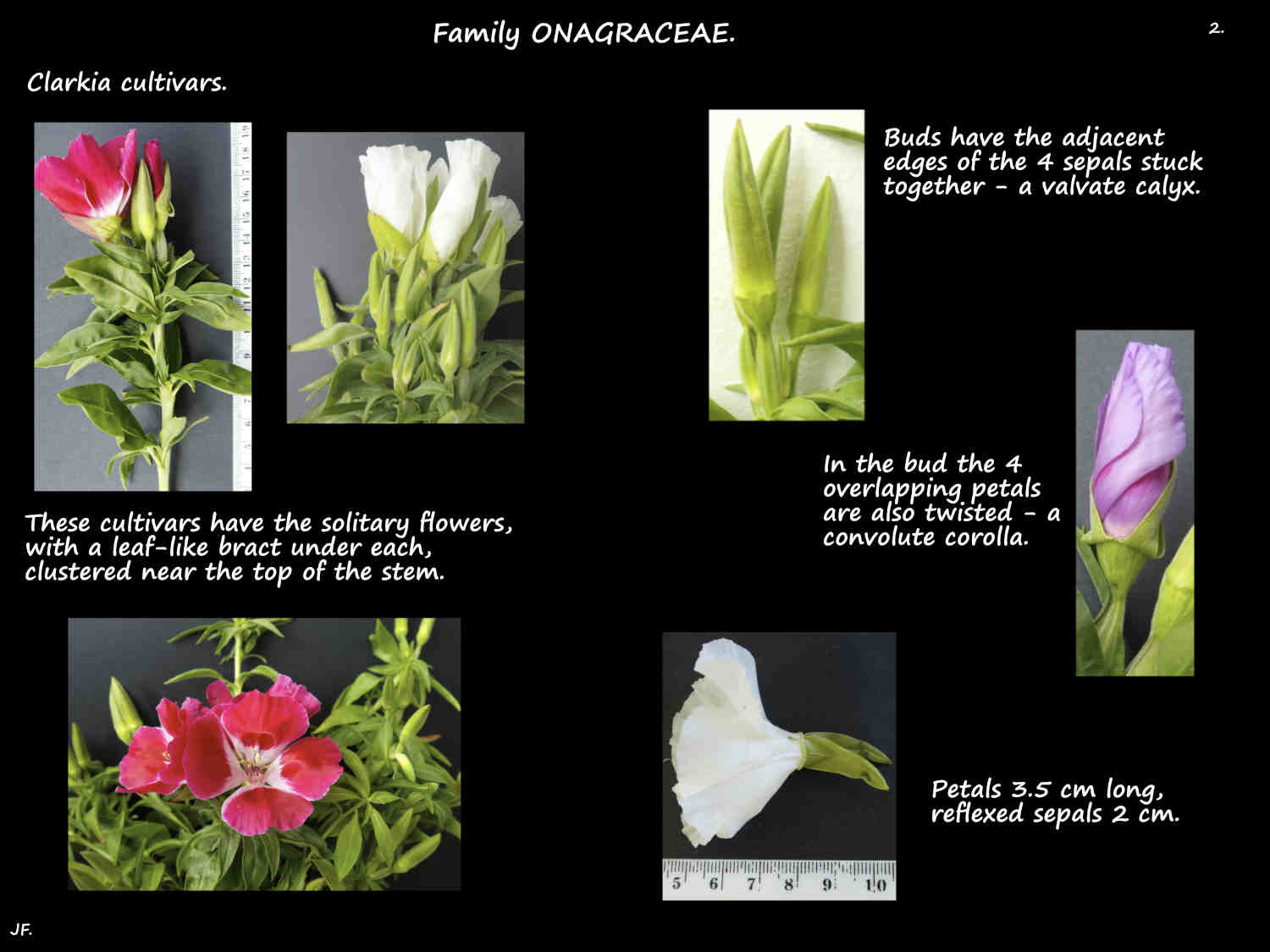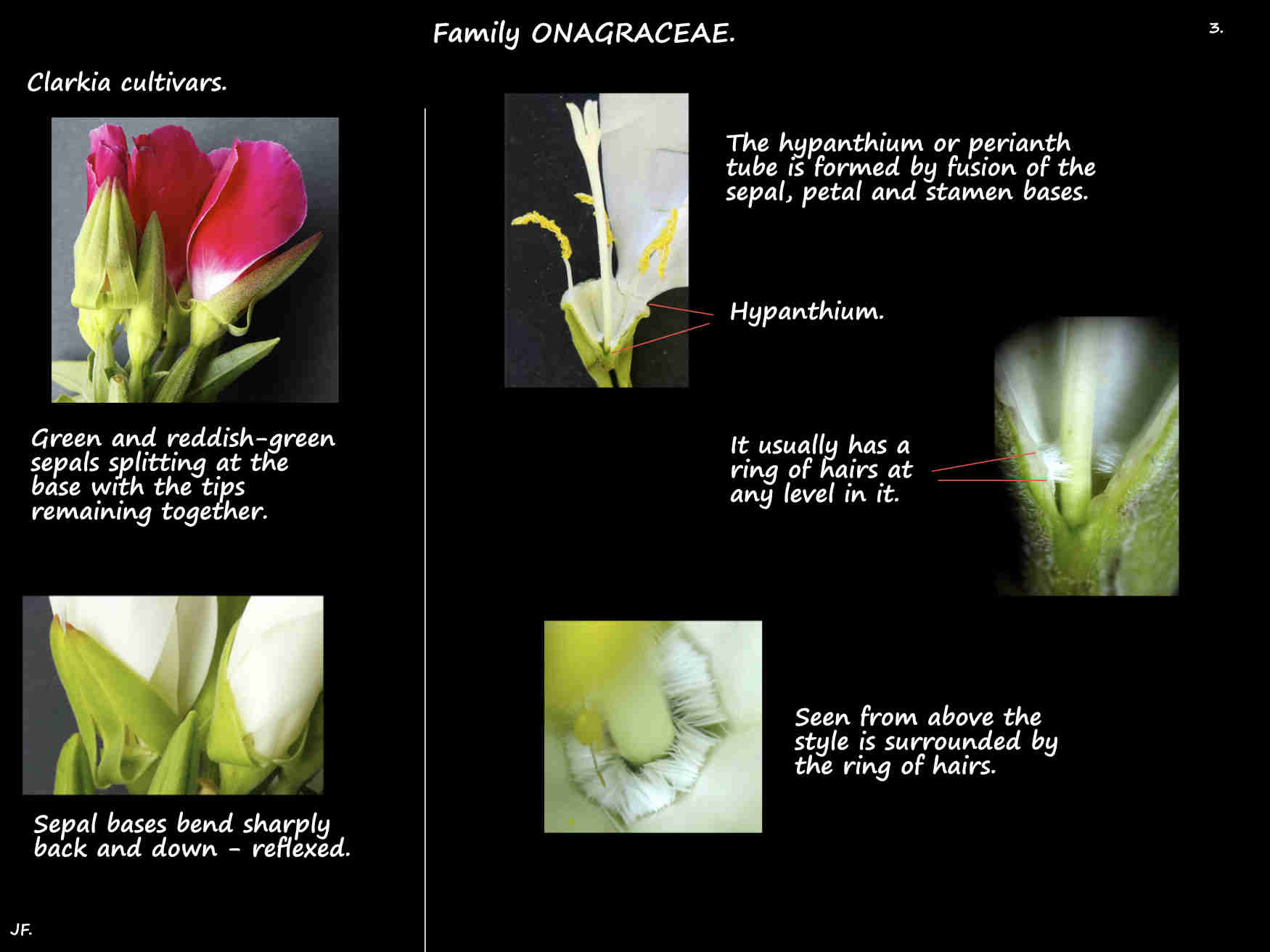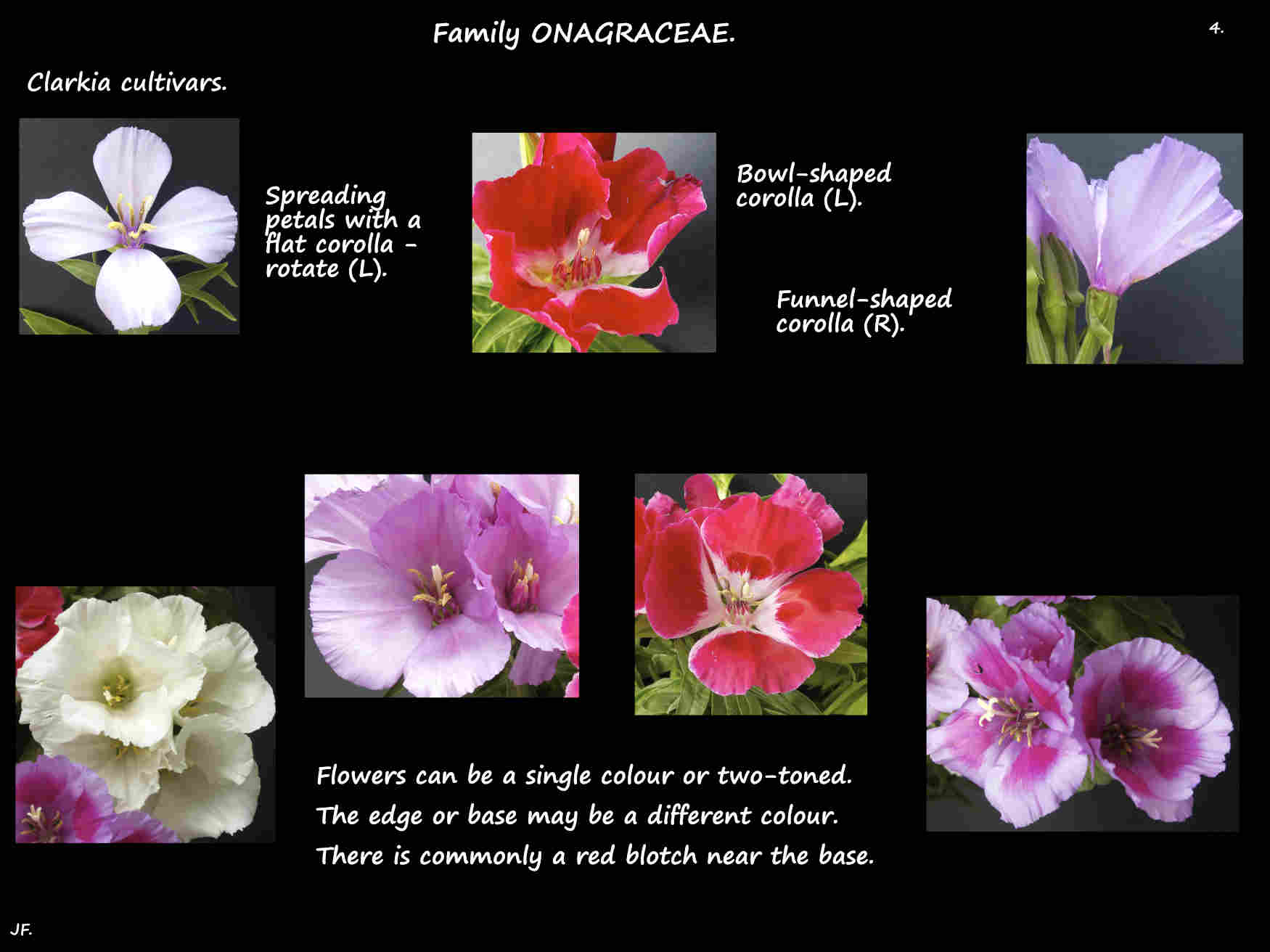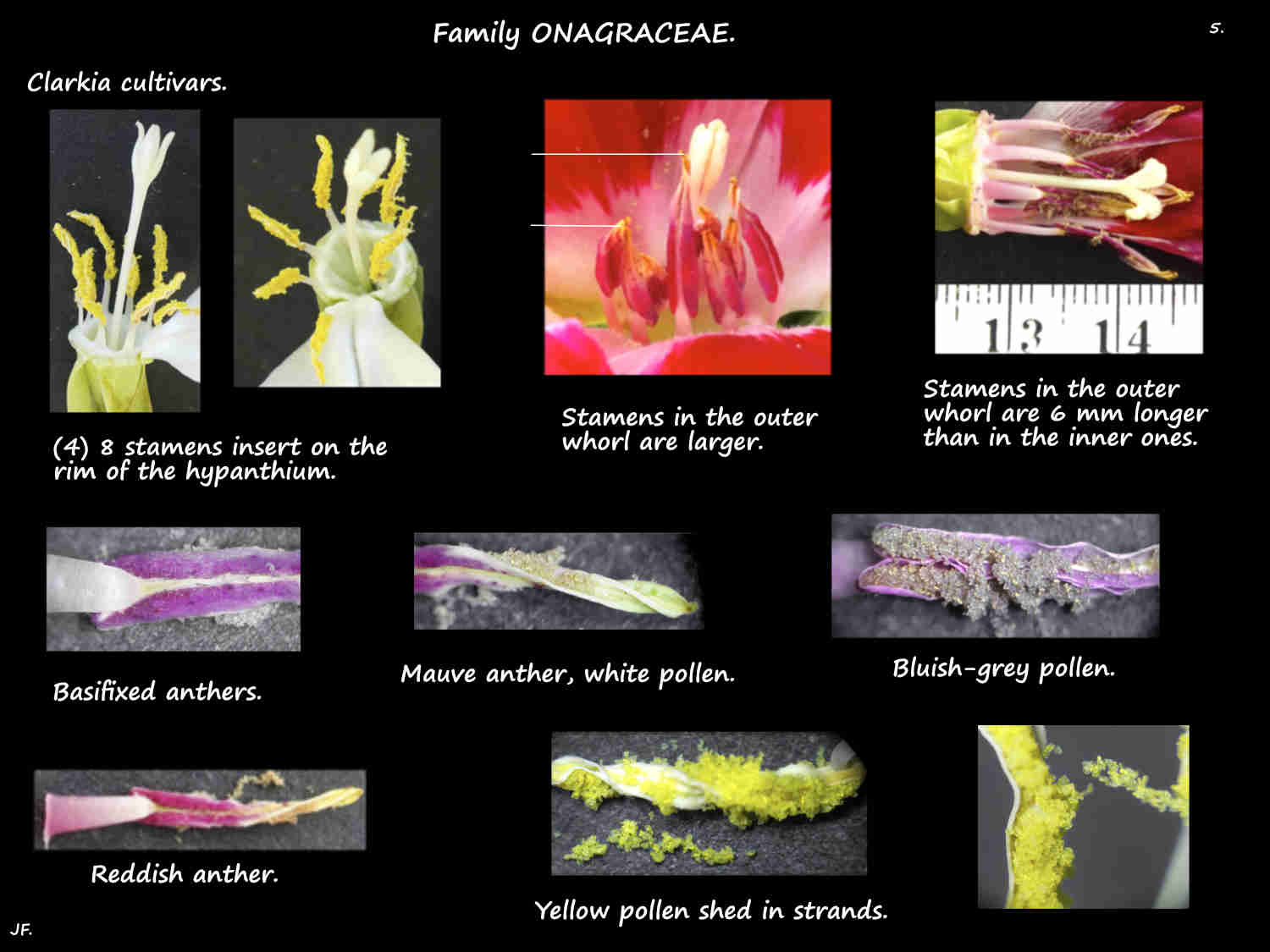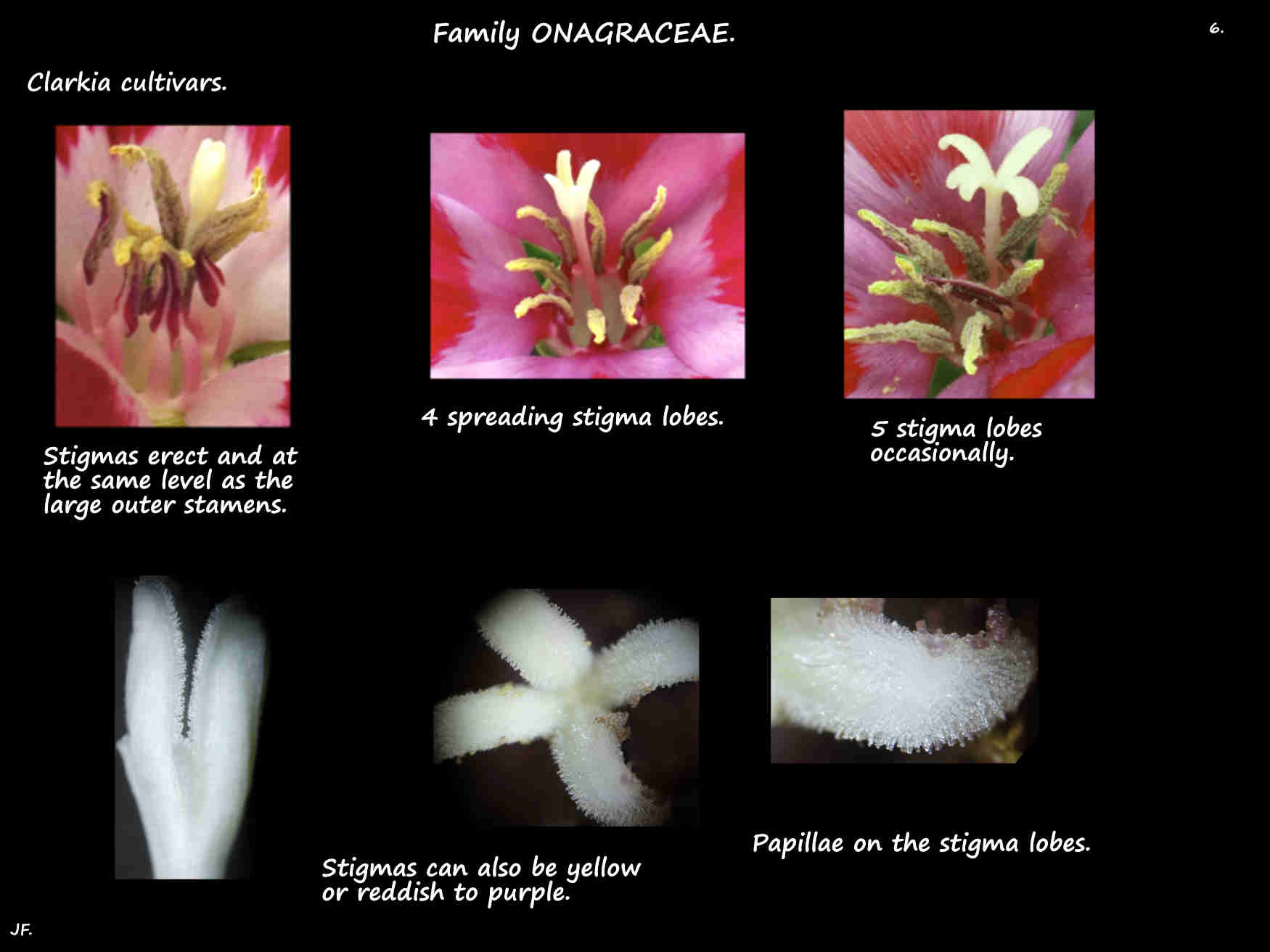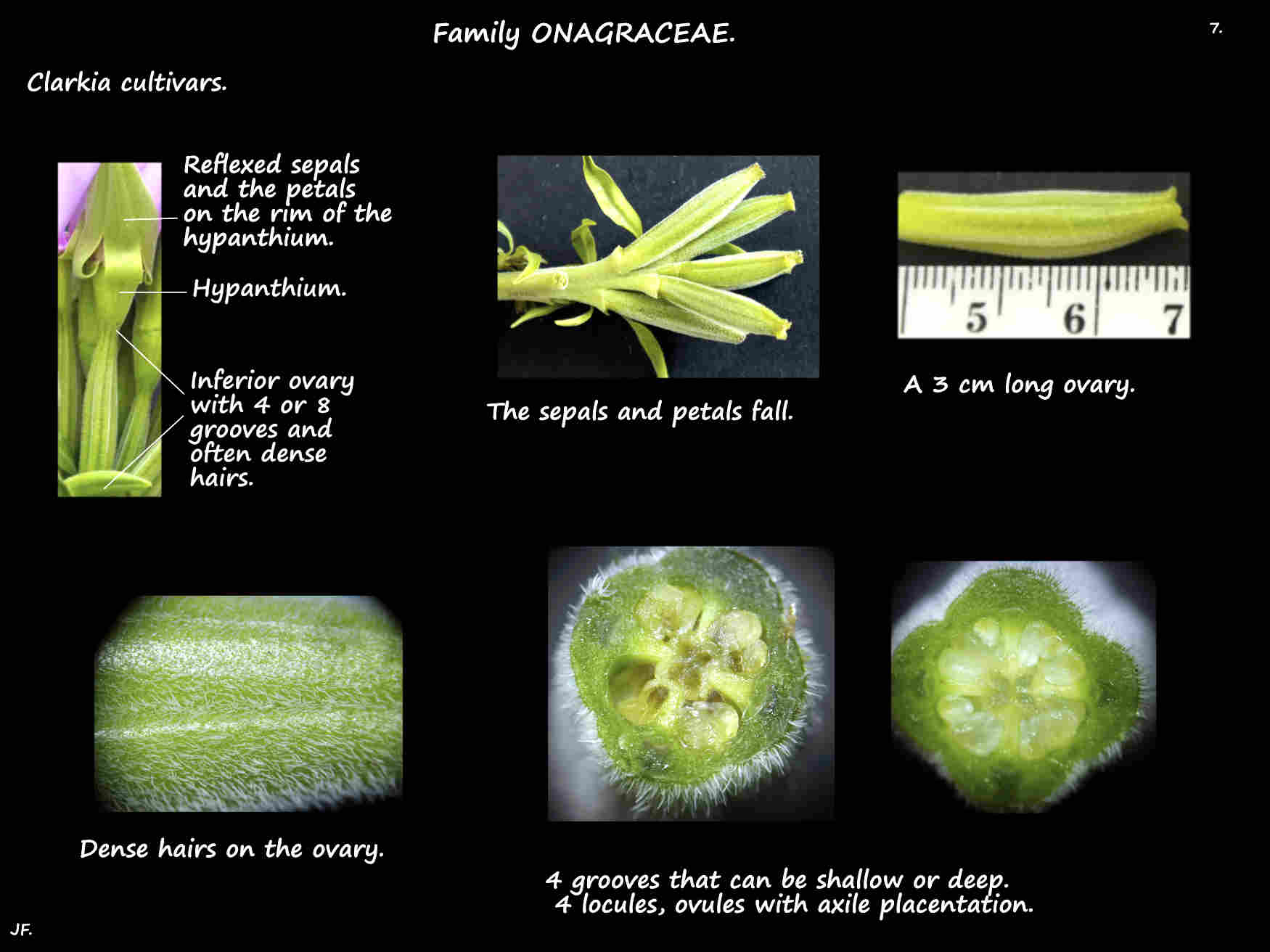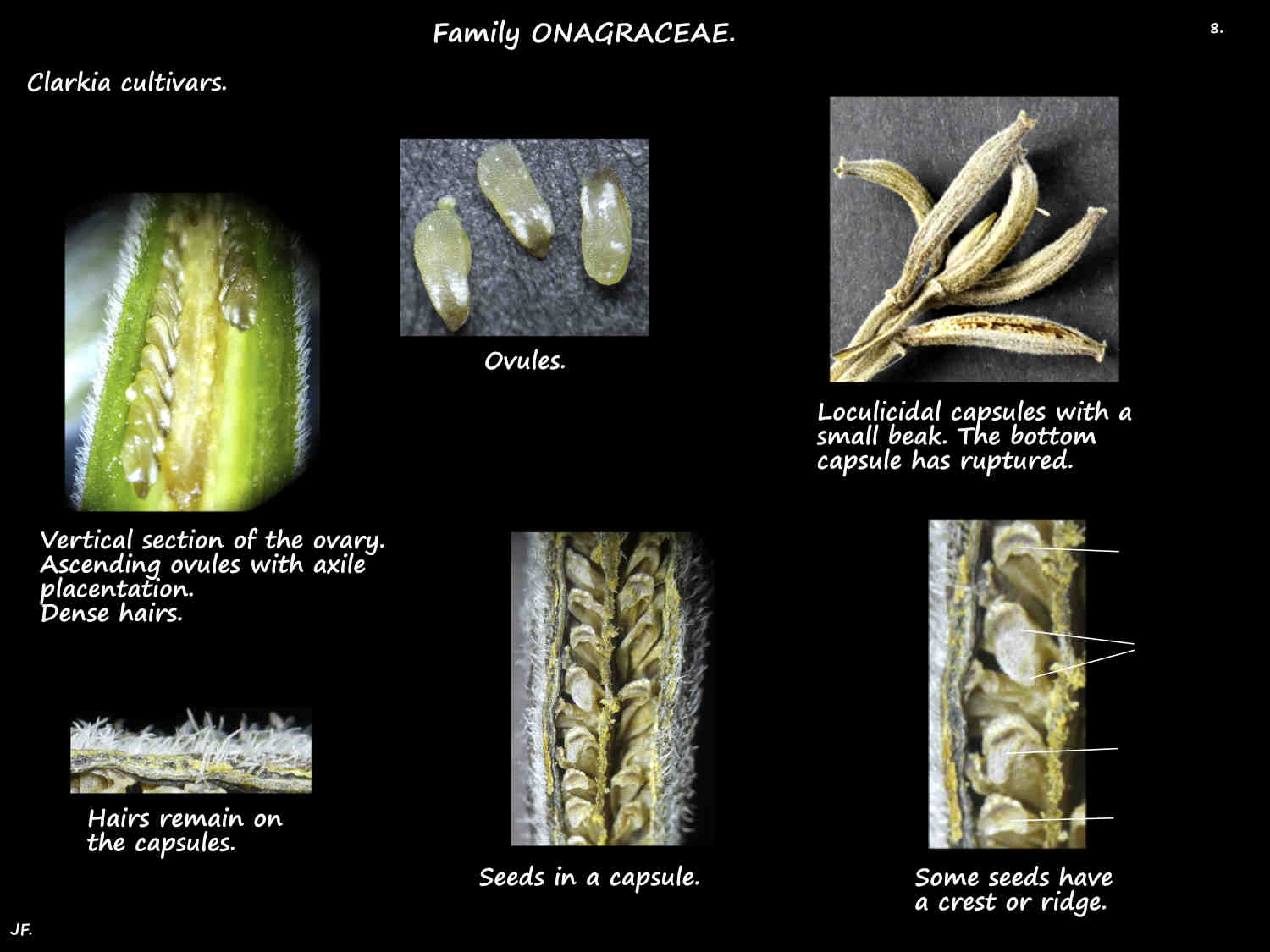Clarkia.
Clarkia are in the Onagreae tribe in subfamily Onagroideae of family Onagraceae.
There are around 40 species most from western North America.
They are known as Farewell to Spring and sometimes as Godetia after the species in that genus were moved into Clarkia.
Most are prostrate to erect annual herbs that are commonly 30 cm up to 1 (2) m high and 30 cm wide.
They may have no branches or a few to many near the base or just near the top.
The stems may have no hairs or have a few to dense short fine ones.
Leaves are alternately arranged but they may be opposite at the base (C. unguiculata).
Leaves have no petiole or one up to 3 or 4 cm long.
The linear, lanceolate or elliptic blades are 1 to 7 (10) cm long.
The edge is sometimes slightly toothed and there may be a few hairs.
The terminal inflorescence can be a short dense cluster of flowers and bracts.
Many are solitary flowers on a spike that can be as long as the leafy stem supporting it.
When the flowers are spread out along the spike the green leaf-like bracts under each flower are visible.
When in bud the inflorescence midrib can be erect or, when drooping it straightens as the flowers open.
The buds, on no stalk or pedicel or one up to 3 cm long can be erect or drooping then erect.
The spikes are racemes with flowers opening from the bottom up.
The bowl, funnel-shaped or rotate (flattish and spreading) flowers can be up to 5 or 6 cm across (cultivars 10 cm).
The fused sepal, petal and stamen bases form a tubular hypanthium 1 to nearly 10 mm long.
The inside can be white or slightly yellow or green and there is a nectary at the base.
The inner surface usually has a ring of short hairs that can be at any level.
When near the top the hairs may extend above the rim of the hypanthium.
There are 4 sepals with their adjacent edges adherent in the bud (valvate).
As the flower opens the calyx may split down one side, or into 2 or 4 sections with the sepal tips remaining joined.
In all cases the sepal bases curve back (reflexed).
Sepals can be green, pink, dark red or reddish-purple with no hairs, few to dense tiny ones or longer ones up to 3 mm.
The 4 petals, from 5 to 60 mm long may be wedge-shaped, elliptic or obovate.
Some have a narrow or claw base with a rounded or diamond-shaped lobe.
Other species have petals with 2 lobes or 3 with the middle one being the longest.
Species plants can have plain white, pale to dark pink, mauve or purple flowers.
Many have have a darker or different coloured central spot or margin.
Most cultivars are doubles or semi-doubles that may be in similar colours and patterns as the species plants.
Others are described as yellow, pale orange, lavender, magenta, salmon, scarlet, deep maroon and burgundy with various spots and streaks.
The 4 or 8 long stamens are inserted on the rim of the hypanthium.
There may be some fringed scales at the base of the linear or club-shaped filaments.
The basifixed anthers can be white or cream, yellow, pink, red, blue-grey, pale-lavender or rarely blue.
Their pollen can be shed as single grains or in long strands.
With 8 stamens they are in 2 whorls with those in each whorl being the same or different.
When different the outer whorl has longer stamens (7.5 to 17 mm) than the inner whorl (5 to 14 mm).
Anthers in the outer whorl are larger and a darker colour than those in the inner whorl.
It has been suggested that the outer ones attract pollinators while the inner ones have the fertile pollen.
On a stalk up to 3 cm long the inferior ovary, with 4 locules is up to 6.5 cm long.
It usually has 4 or 8 shallow to deep grooves down it and there are commonly dense hairs.
The style, up to nearly 20 mm long has 4 stigma lobes that are covered in papillae.
The white or yellow (red to purple) stigmas may be below or above the level of the anthers.
The fruit are narrow cylindrical loculicidal capsules 1 to 7 cm long.
They often have 4 or 8 grooves and may have a 1 to 2 mm long beak.
Each locule has many (1 or 2) brown or grey angled seeds up to 2 mm long.
Grown in gardens or for cut flowers are C. amoena, C. pulchella, C. unguiculata and cultivars of them.
J.F.
